After all, science should be studied in the field, hands-on, not from a tiny, uncomfortable chair in a faceless auditorium.
Looking at flowers and seed pods in the cloud forest – now that would be an entertaining botany lesson.
Giggling over stilt-legged oystercatchers, elegant blue herons, and other coastal waders scuttling across the sandy beaches in search of crustaceans…what a tremendous way to learn about birds.
Or maybe filling glass jars with contaminated water filtering into the neighborhood (urine runoff from a laboratory doing questionable animal experimentation). That earned me an A+ in conservation class AND got the creepy lab a nice, big hefty fine for pollution. I was quite proud of myself.
Now, years later, I find that the geological science of volcanology, which is the study of volcanoes, fascinates me, and fortunately my husband Gustavo and our son Nicolas share that same fascination.
Rather than hang out in some stuffy museum, looking at petrified lava rock, we brave the world and go in search of thermal activity. No matter how it bubbles up out of the Earth – whether in cataclysmic eruptions, showers of magma, raging geysers, or gently-bubbling, tepid sulfur springs, it makes for great learning experiences, not to mention great vacation memories.
If you travel to learn just as much as to get away, or if you are a traveling family looking to take your kids on the ultimate field trip, check out this boots on the ground class, Volcanology and Geothermal Energy 101.
Arenal Volcano, Costa Rica
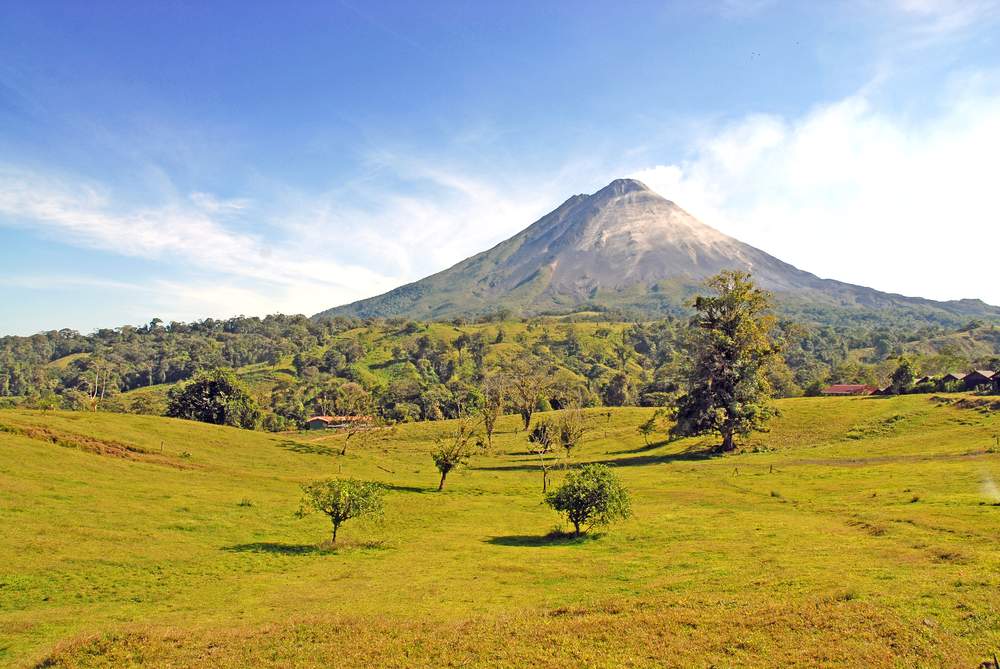
I heard about the 2000 eruption of the volcano while I was dangling in midair, zip-lining through the canopy of the rainforest. Suddenly, the tour guide’s walkie-talkie squawked, which was followed by hushed whispers in panicked Spanish.
I immediately had a one-minute lesson in straight-down-to-the-ground rappelling, whereupon we hastily rode our trusty steeds back through the countryside to the beginning of the trailhead. From there, we jumped in the SUV and hurried back towards the town of La Fortuna. My husband, not fond of heights, had opted to stay back at our hotel. He had already been evacuated.
Ash, seemingly mixed with rain, pelted the windshield like hail, and our wipers were working overtime trying to keep up with the steady shower of falling cinders. The air was thick and oppressive enough to make it difficult to breathe.
Volcán Arenal was pumping out an effluvium of noxious gases.
As it turned out, I had actually captured the commencement of the rupture on film after breakfast.
“Do you see that?” I pointed toward the swirling billows of greyish soot roiling out of a newly-opened fissure close to the grass-and-lichen-covered base of the cone.
“I told you something was going on with the volcano yesterday…that water in the hot springs (at Tabacón) was near-about to the boiling point.” Still disappointed about not seeing a “lava fireworks display” last night in the dark, I settled for the never-ending smokescreen of soot being vomited from Arenal’s fiery depths. Click…click…click, the shutter whirred on my camera.
Telica Volcano, Nicaragua
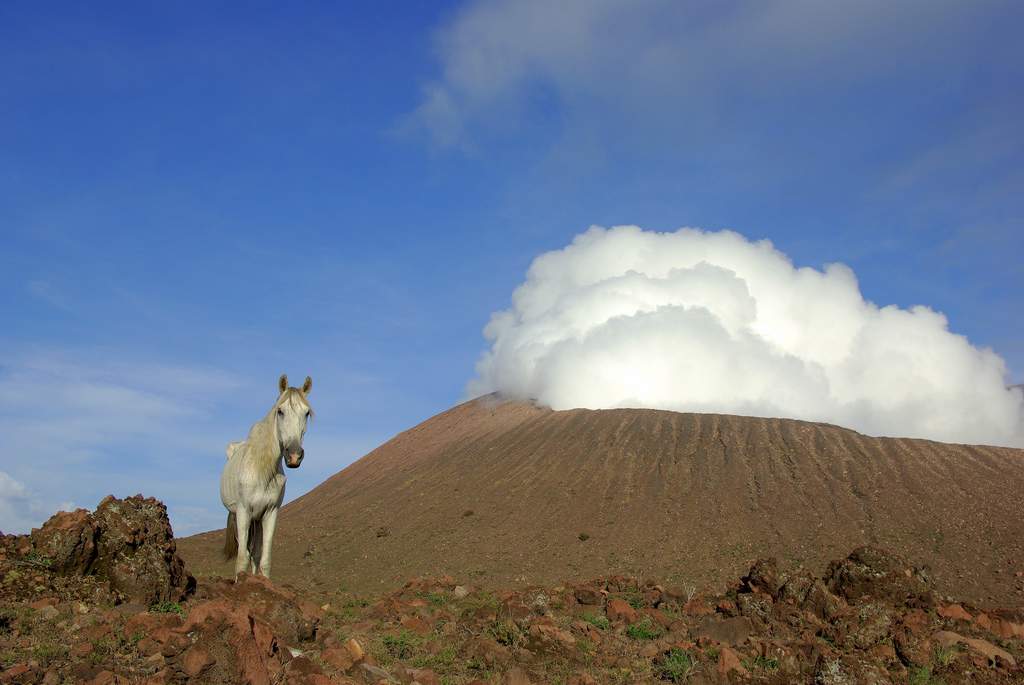
I swung the flashlight in a huge arc, aiming its beacon at the pond in front of us and its dozens of singing bullfrogs. Scarlet eyes glinted in the beacon of my torch. Volcán Telica loomed somewhere in the distance…in the dark. Smoking. Belching up the smell of sulfur from her belly.
“Stop!” our tour guide, Florian, admonished. “We’re approaching the edge.”
The edge of the abyss. We dropped to our knees, then prostrate, until we were crawling commando-style to peer into the caldera. One hundred twenty meters (393 ft.) down, lava was bubbling at 570°C (1058°F). Every so often, a glowing ember of scoria sparkled, vermilion-red, reminding me of a winking dragon. Before the ruby slag disappeared into blackness.
Satisfied that we had witnessed, first-hand, the jowls of Hades, we retreated back to the relative safety of our campsite. Ringed by fluttering palm trees loaded with coconuts, the meadow at the base of the volcano swaddled our sleeping bags in a velvety carpet of green, though I’m not sure how much of a haven our canvas tents pitched a mere 800 meters (half-mile) from this veritable portal to hell might have actually been. No matter, we were delighted to drift off to dreamland to the chirping of crickets, the crackling of our slow-dying bonfire, and the distant snoring of the dragon.
I prayed the next day’s trek back down the mountain, through the cloying heat of the rainforest, would not require as much effort, OR as much water, as the climb up. A good two bottles of our 20-liter supply had already been poured directly over my head to assuage the stifling humidity.
Yellowstone National Park, USA
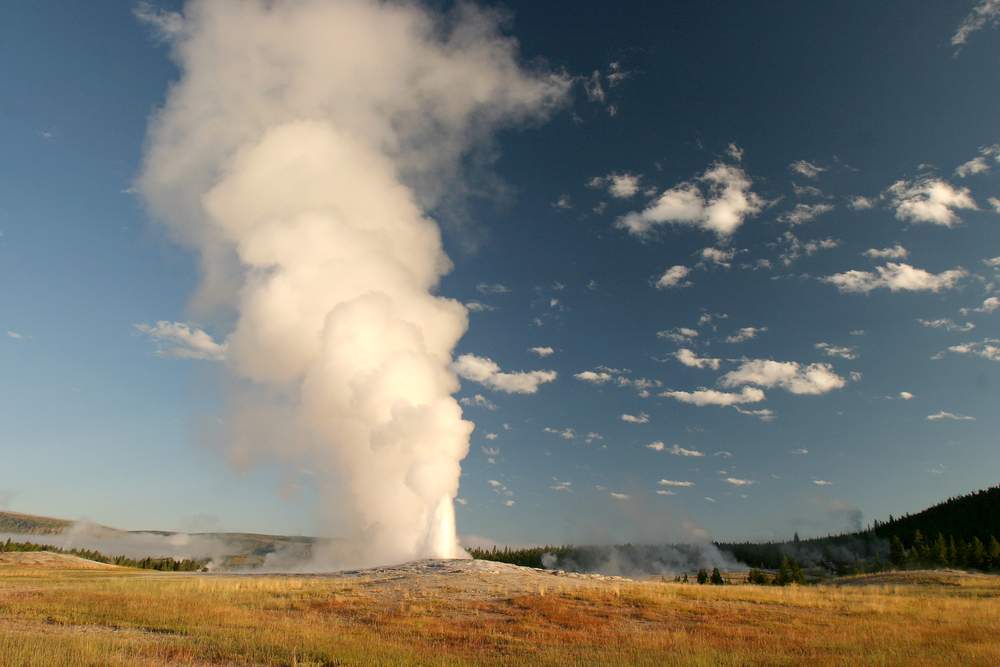
I stood unmoving, looking at the hundreds and hundreds of acres of torched trees. Incinerated in one of the worst burn-off conflagrations of the century (1988). Devoid of leaves, the singed branches dangled like limp arms from their blackened trunks. Yellowstone’s corpses. For miles and miles, we drove into the park, and the usual proliferation of vegetation had given way to this stark, moon-like wasteland.
Like everyone else, we were here to see Old Faithful, and the geyser didn’t’ disappoint. She spouted a spray of steam between 105-184 ft. into the air. Almost on the hour. Every hour. About every 63 minutes, to be exact. You could set your wristwatch by her eruptions. We felt the heat from the scalding mist, dissipating into the frosty morning.
Yellowstone in winter has always been my favorite time of year. I enjoy tramping through the crusty snow, my boots sinking in the soft slush and leaving icy footprints. Strolling the boardwalks with hot chocolate in hand. Gazing into turquoise pools of thermal water at the Norris Geyser Basin, where hot springs imbued with micro-organisms exhibit rainbow hues of emerald, orange and purple.
According to Henry Winser’s 1883 Manual for Tourists, and before the 1911 ban, fisherman could catch trout in Yellowstone Lake, and follow it by a rapid “boiling” of that same fish, still on its hook, in the scalding waters of Fishing Cone Geyser. What fun it would be to relive those days of yesteryear! At Mammoth Springs, cataracts of thermic water cascade along the travertine terraces, like ruddy mineral fountains of copper and gold.
During the chilly weather, even the animals seem more illustrious: exceptionally-fluffy bison wander the deserted roads, a solitary moose scrapes his handsome rack against a lone tree, a juvenile fox leaves nearly-imperceptible footprints in the crunchy drifts of snow. The stark surrealism of Yellowstone and all its natural wonders gives credence to the raw power of Mother Nature, a thrilling landscape of geysers, fumaroles and mud pots simmering on top of the world’s largest volcano. Just think, right below the surface, practically beneath your feet, molten magma blubbers.
Mont Pelée, Martinique

The Lesser Antilles volcano has left an indelible mark on me. I am still picking out splinters of gravel from the palm of my hand with a pair of tweezers. The memory of sliding on the loose rock, scrambling desperately for a foothold, is still fresh in my mind. So is the realization that, thanks to the impenetrable fog this morning, and the uncertainty as to where the edge of the mountain lay, I could have very easily plunged to my death.
Deciding not to spoil my mood by brooding on what might have been, I concentrate instead on the magnificent view of Mont Pelée in the distance. Le volcan looms like an ominous shadow, dormant yet menacing, over the re-invented French town of Sainte-Pierre. Thirty-thousand inhabitants were consumed within minutes on that fateful day- May 8th, 1902 – decimated by a pyroclastic eruption, a giant black mushroom-cloud of 1075°C (1937°F) steam, gas, and rock that hurtled down the flanks of the mountain like a meteor towards the cultural capital of the island, touted as the Paris of the Caribbean.
Only a solitary survivor, Louis-Auguste Cyparis, was pulled out of the rubble, four days after Mont Pelée unleashed her fury. Entombed in the jail’s small, windowless, half-subterranean holding tank for disorderly conduct from a bar fight the night before, the man drenched his clothes in urine to stave off the broiling-hot ash filtering in through the single air vent. Though badly burned, Louis-Auguste weathered the incineration and found celebrity fame, touring North America with Barnum and Bailey’s circus.
Four miles (6.4km) away, enveloped in prolific greenery, Mont Pelée sleeps today. A terrifying chimera, slumbering quietly, for now. The town has been rebuilt from its ruination; even the partially-buried prison cell of Cyparis is embellished with fresh sprouts of verdancy seeping through the cracks.
Mt. Vesuvius, Italy

Considered a ticking time bomb, mainland Europe’s only “live” volcano, Vesuvius dominates the skyline overlooking modern-day Naples. An estimated 600,000 people, in 18 towns dappling the base, make their homes within the “red” zone. Named for Vulcan, the Roman god of fire, the volcano’s most notorious claim to fame came in 79 A.D., when a massive explosion of ash, hot cinders, and pumice, followed by a heatwave of 482°C (900°F), rained fire from the heavens and engulfed the entire towns of Pompeii and Herculaneum. For nineteen hours Vesuvius vented her empyreal wrath with fire and brimstone, rendering these prosperous, rich-by-any-standards cities uninhabitable for centuries.
They were nearly erased from the history books. Nearly, until about 250 years ago, when they were transformed into tourism meccas. Today, I purchase my audio guidebook at the ticket office of the ruins of Pompeii, wishing I had been here yesterday, the first Sunday of the month, when admission fees are waived. With detailed map in hand, I mentally chart a course through the ancient village based on recommendations from the Internet, and head in the direction of the not-to-be-missed attractions.
Sights to see: the Ampitheatre, which held gladiator fights; the Basilica, where justice was meted out; the Forum Baths; Lupanar, a quasi-famous brothel which advertised the services it offered in pornographic frescoes above the room’s entranceways; and Via dei Sepolcri (Street of Tombs), where you can see the worn ruts in the cobbles, from carriages.
I find the noticeably-raised sidewalks and stepping stones for crossing an interesting notion, intentionally fashioned for pedestrian traffic to avoid the water and waste – human and animal flotsam – flowing down the avenues. Just painting that picture in my mind makes me glad I have closed-toe shoes on and not sandals, though I’m relatively convinced that the scorching temperatures from Vesuvius have seared the millenniums-old microbes of bacteria from these surfaces.
Check out our Italy Route Planning Guide
Pagosa Springs, Colorado
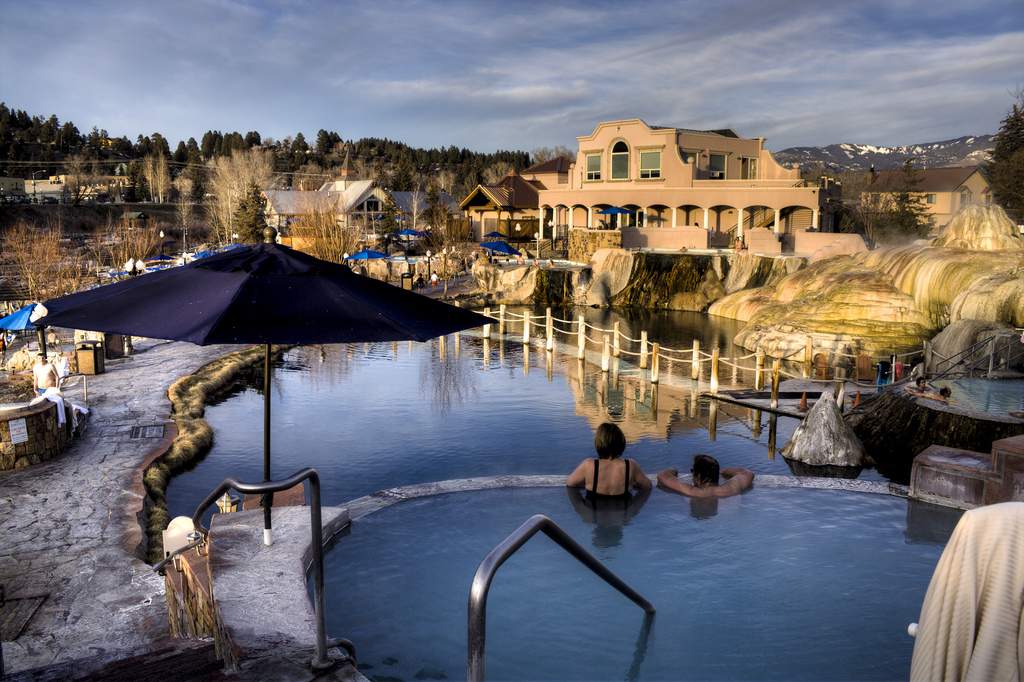
I gingerly dip a toe into the geothermal pool here at Pagosa Springs. Literally translated by a Ute Indian elder as Water That Has a Strong Smell, the therapeutic springs -Pah gosah in their language – are fed by a heated underground aquifer. The reeking, more than likely, can be attributed to the high mineral content, evident from the crystallized terraces of sulfur, chlorides, and magnesium, that, it’s safe to say, would not scrub off with Lime Away.
Slowly, I sink down into the extreme warmth. I have gone from a slow coddling in the Top O’ the Morning pool (99°F), to partially basted at Clouds in My Coffee (102°F), to almost poached at Summer Breeze (104°F). My foot delves deeper into the hottest of the 23 pools at the Pagosa Springs Resort, appropriately deemed the Lobster Pot, and I jerk it around, attempting to fan the heat. At 108°F, this gently-churning spa threatens to hard-boil me in my entirety, strange that steaming water can burn like fire. My husband, stewing contentedly, mutters, “Wimp,” under his breath as I dash for my towel to nurse my scalded limbs.
Gustavo can only steep about a minute longer in the intense calefaction before he, too, has to find cooler waters. Together, we shimmy down the narrow alleyways, sculpted between artful landscaping, toward the river’s edge. The San Juan, a brisk 38°F. When our still-tingling-from-the-jacuzzi bodies make contact with that chilly current, it equates to diving into a frigid hopper of ice. Wisps of steam spiral up from the creek.
Use this Route Planning Guide to Colorado to help plan your trip.
Isla Isabela, Galápagos Islands
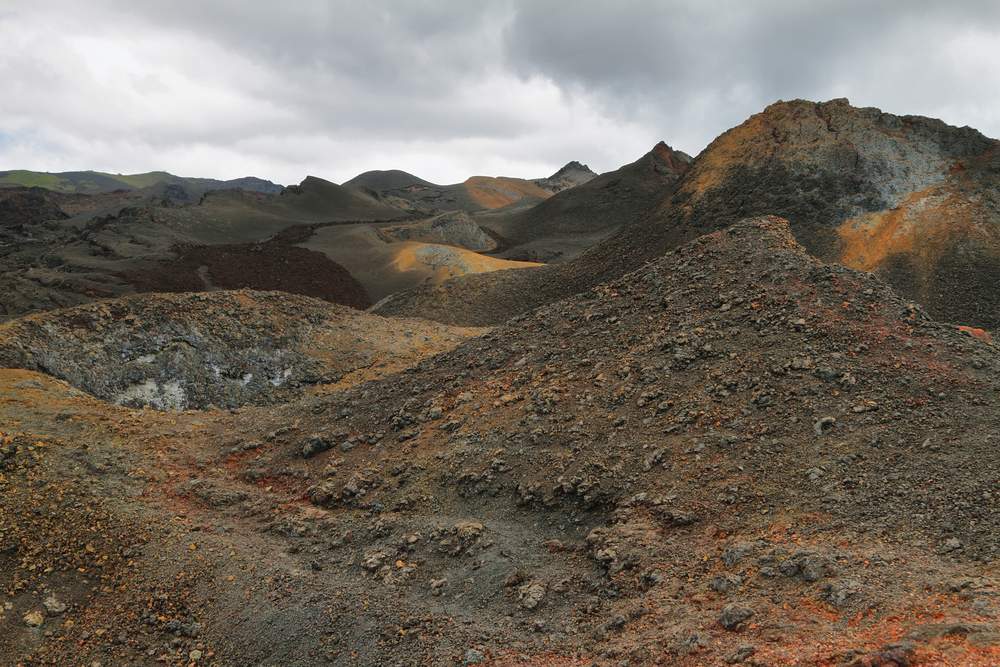
My husband Gustavo and I are lagging behind again, on the uphill trek to the caldera of Sierra Negra. At least thirty years separate us and the others on this excursion, except perhaps our tour guide, and the 10-miles in five-hours pace has left us panting. “I thought this was a hike, not a race,” I snap to anyone who’s in earshot. A mantle of fog enshrouds the crater, offering a pitiful photographic opportunity. Anyway, not much to see save the blackened walls of carbonized earth inside the cauldron, with occasional embellishments of algae-like vegetation.
We continue along the trail, considerably less muddy than earlier, in the direction of its sister spawn, Volcán Chico. We stop for a rest at an idyllic picnic area, Los Jaboncillos, (named for the trees providing the delicious shade) before heading through the desert terrain, dotted by cactus bushes and colorful boulders. Fumaroles and sulfur vents hiss at our passing. We struggle to maintain our balance on the rugged terrain, rife with sputtering hornitos (little ovens) that ooze liquefied lava. Painted by Mother Earth in variegated layers of igneous rock, Volcán Chico grants us an outstanding vista of the surrounding Galápagos Islands.
We descend this secondary volcano, winding through the maze of hardened lava fields. Past the
Opuntia cacti. As everywhere in the archipelago chain, we leave no trace behind, nothing but our footprints. I almost feel guilty having to squat behind a rock cluster to pee, as if that might somehow deface this desolate land. Nothing quite like the sensation, though, of a bluster of wind whooshing across your bare backside.
Santa Cruz, Galápagos Islands
The three of us – Gustavo, my son Nicolas, and I – scamper through the lava tunnel here in the Highlands of Bellavista, on the main island of Santa Cruz. Compared in size to a London subway (and I found that to be quite a fitting description), this hollowed-out tube is created when the exterior magma of a lava stream cools down, thereby hardening, while the inner magma continues to flow. Once released, an outer shell forms. With its walls of drab grey, el túnel seems almost like an unending concrete cavern to me, plunging into darkness. Suddenly, I have to hike up my skirt to dodge an extremely low overhang. Since we are forced to crawl on hands and knees through a patch of muck, I don’t want to sully my clothes.
Read Finally, A Galapagos Trip You Can Afford to see how to do the Galapagos on a budget
Villarrica, Chile
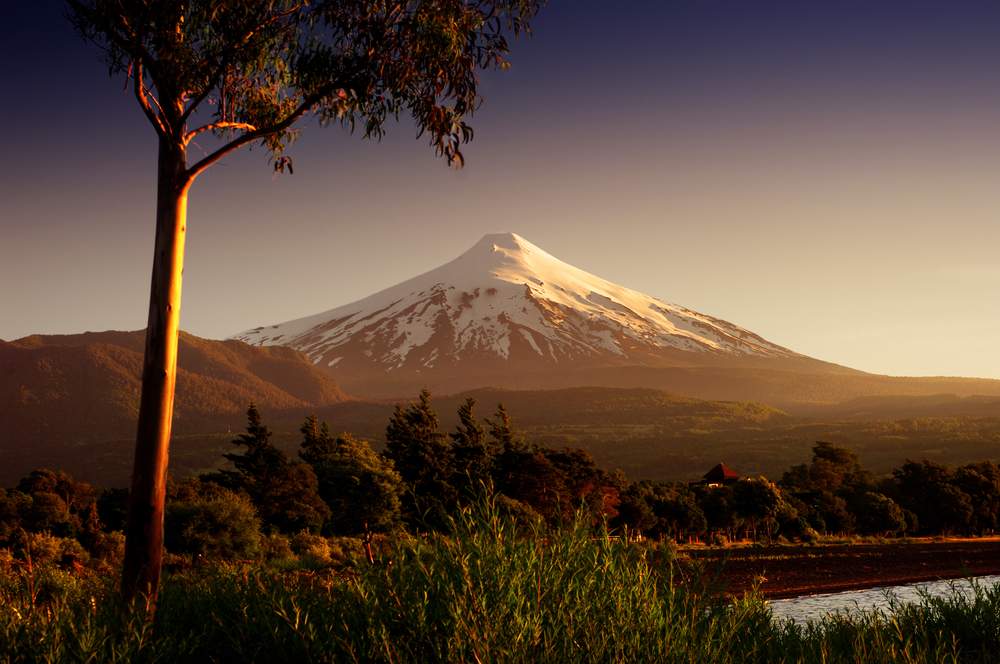
I stand stooped over, leaning on the wooden rails of the newly-built fence-line on our one-half hectare (about one acre) of pastureland. The view in front of me – Volcán Villarrica – with its 24-square-kilometers (15-mile) glacier cap and year-round dusting of snow. Like a frosted cupcake, the volcano rises above its namesake lake and town, looming large over the ebony-sand beaches of nearby touristy Pucón.
Fast forward several months, to March 3, 2015 (autumn in Chile), and the sleeping volcano awakens. It rouses from its slumber to purge a shower of crimson magma several hundred meters tall and a whorling ash column that will soar 3km (1.3 miles) above its hardened-lava strato-cone. A lucky photographer captures a sizzle of lightning in the plume. This unique weather phenomenon, aptly named a ‘dirty thunderstorm’, develops when enough static is created from colliding particles of ice, ash, and fragments of rock to generate an electrical charge.
Always fearing the onset of a lahar, or mudslide the consistency and viscosity of wet concrete, Chilean authorities at the National Emergency Office declare a red alert in the municipalities of Villarrica, Pucón, and Curarrehue in La Araucanía region, and Panguipulli in Los Ríos region.
Residents flee in orderly fashion. With 10% of the world’s volcanoes (2,000 in the Andean Cordillera, of which 90 are active), and holding the record for the strongest earthquake ever on the Richter scale, natural disasters are nothing new for Chile. It may be a while, though, before adventure-seeking globe-trotters can trek or ski – or, for that matter, bungee – the slopes of the blazing mountain again. As for my husband, son and I, we just hope to find the meadow on our property still swathed in greenery, with the fence still standing and uncharred.
If you’re planning a trip to Chile, use this Route Planning Guide to help plan your time there.
As our magnificent earth around us continues to spew and sputter fountains of lava and cloudbursts of deadly tephra (eruption fragment particles), we can appreciate its power and marvel at the unpredictability of nature.
And we can study it, as well. But not in the classroom. In the trenches. On the slopes of these powerful mountains of fire.
Go on a Volcanology RTW Trip
We built a trip on Indie around all the above locations. If you’re interested in volcanoes and geology on your travels, use the trip below to inspire you!
Did you know?
As long as you are a member of the BootsnAll community (Join us, it’s free!), you can customize any of our pre-made multi-stop trips (like the map you see below) to make them your own. Click price this trip on the map below to get immediate, bookable prices.
Photo credits: robert cicchetti, Jool-yan, Adam Baker, Melissa Schalke, T photography, canadastock, Will Keightley, Marisa Estivill, Denis_A